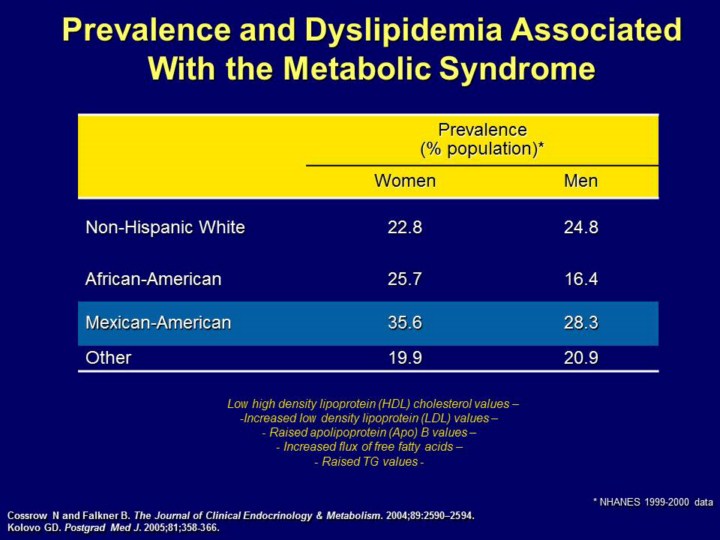| front |1 |2 |3 |4 |5 |6 |7 |8 |9 |10 |11 |12 |13 |14 |15 |16 |17 |18 |19 |20 |21 |22 |23 |24 |25 |26 |27 |28 |29 |30 |31 |32 |33 |34 |35 |36 |37 |38 |39 |40 |41 |42 |43 |44 |45 |46 |47 |48 |49 |50 |51 |52 |53 |54 |55 |review |
 |
The prevalence of the metabolic syndrome is shown on the current slide. The prevalence of the metabolic syndrome is highest in Mexican-Americans compared to other ethnic or racial groups.1
Alterations in lipid patterns is one of the main characteristics of the Metabolic Syndrome. The dyslipidemia associated with the Metabolic Syndrome includes raised triglyceride levels and low levels of HDL-C, increased levels of small dense LDL-C, and increased Apo B levels.2
Therefore it is important for clinicians to understand the high prevalence and dyslipidemia associated with the Metabolic Syndrome to assist them in accurately diagnosing patients with this condition.
References: 1. Cossrow N and Falkner B. Race/Ethnic Issues in Obesity and Obesity-Related Comorbidities. The Journal of Clinical Endocrinology & Metabolism. 004;89:2590–2594. 2. Kolovou, GD. Pathophysiology of dyslipidaemia in the metabolic syndrome. Postgrad Med J. 2005 Jun;81(956):358-66.
|